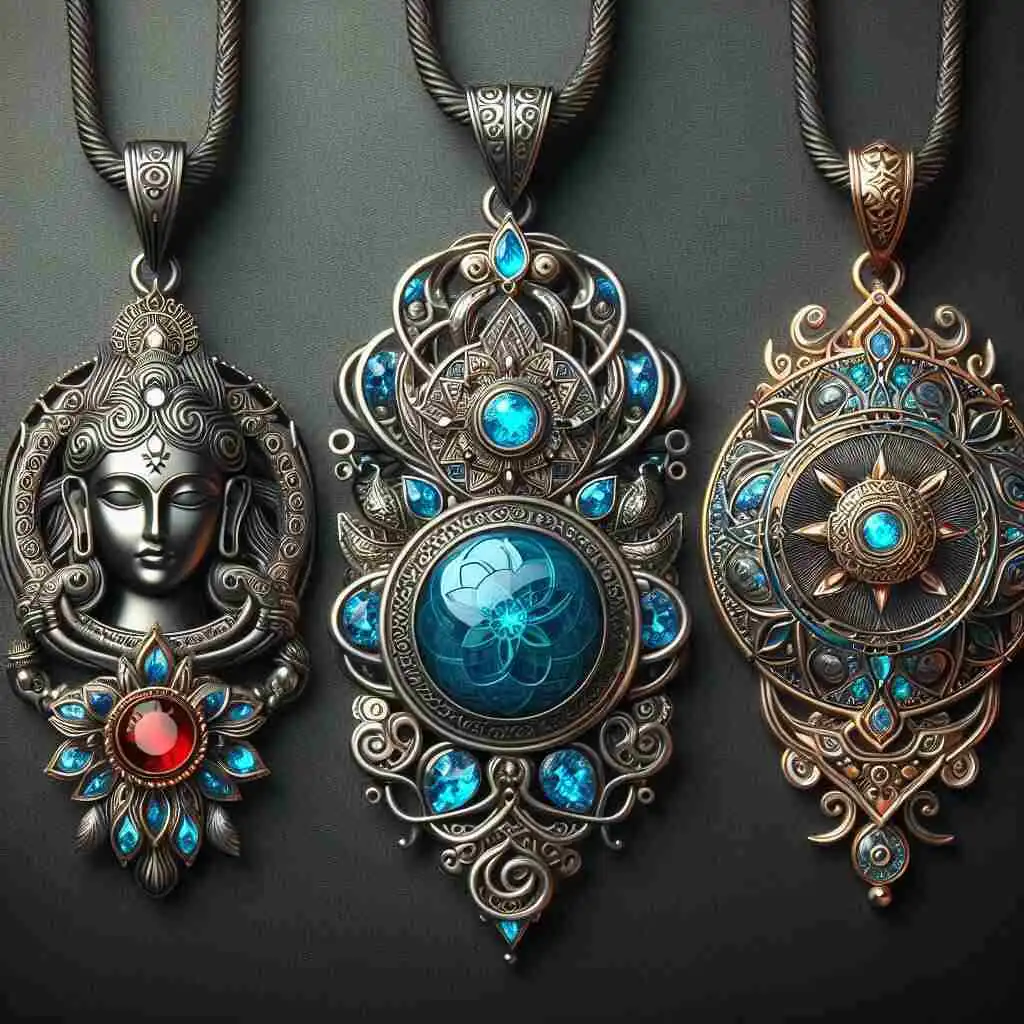From simple talismans to elaborate masterpieces, pendant jewelry has adorned necks and held personal significance for millennia. This intricate art form transcends mere decoration, serving as a window into the cultural, social, and artistic expressions of different eras. Let’s embark on a captivating journey through the evolution of pendant jewelry, exploring its symbolic meaning and stylistic transformations across the ages.
Ancient Beginnings: Protection and Power
The earliest evidence of pendants dates back to the Paleolithic era when humans fashioned pendants from animal teeth, shells, and stones. These early adornments served not only as decoration but also as talismans believed to offer protection, good luck, and connection to the spiritual realm.
Ancient Egyptians:
Evolving into a more sophisticated art form, ancient Egyptians crafted intricate pendants from precious metals like gold and gemstones like turquoise and lapis lazuli. These pendants often featured scarabs, gods, and hieroglyphs, symbolizing religious beliefs, social status, and personal aspirations. The iconic Eye of Horus pendant represented protection and healing, while the ankh symbolized eternal life.
Ancient Greeks and Romans:
Ancient Greece and Rome embraced pendants as expressions of cultural significance and individual identity. Greeks favored pendants depicting mythological scenes, deities, and symbols of victory. Romans incorporated cameos, intaglios (carved gemstones), and coins into their pendant designs, often reflecting social status and military achievements.
Medieval Europe: Faith and Status
Medieval Europe witnessed a rise in religious symbolism within pendant jewelry. Crosses and other religious icons were prevalent, reflecting the dominant influence of Christianity. Pendants also served as a means of displaying social status, with nobility sporting elaborate pieces crafted from precious materials and intricate designs.
The Renaissance: A Celebration of Art and Individuality
The Renaissance marked a shift towards pendants that celebrated artistic expression and individual identity. Artisans employed innovative techniques like enameling and gem-setting to create exquisite pendants featuring portraits, mythological figures, and floral motifs. The cameo experienced a resurgence, often depicting classical scenes or figures.
Victorian Era: Sentimentality and Romance
The Victorian era saw an increased emphasis on sentimentality and personal expression in pendant jewelry. Lockets containing portraits of loved ones, hair mementos, or precious keepsakes became popular. The mourning brooch emerged, often featuring black enamel and gemstones, symbolizing grief and remembrance.
20th and 21st Centuries: Diversity and Innovation
The 20th and 21st centuries witnessed an explosion of diversity and innovation in pendant jewelry. Modern design movements like Art Deco and Art Nouveau influenced pendant styles, incorporating geometric shapes, bold colors, and unconventional materials. Gemstone varieties expanded, with sapphires, emeralds, and rubies gaining prominence alongside traditional materials. Today, pendant jewelry continues to evolve, reflecting individual styles, cultural influences, and technological advancements. New materials like titanium and 3D printing techniques are pushing the boundaries of design and expression.
Beyond Aesthetics: The Enduring Appeal of Pendants
The evolution of pendant jewelry is not just about changing styles; it’s a testament to the enduring human desire to adorn ourselves with objects that hold personal significance. Pendants transcend mere decoration, serving as symbols of faith, love, family, personal achievements, and cultural identity. Whether crafted from simple materials or adorned with precious jewels, pendants continue to captivate hearts and tell stories through their unique blend of symbolism and style.
In Conclusion:
The journey of pendant jewelry is a fascinating exploration of human creativity, cultural expression, and personal connection. From ancient talismans to modern masterpieces, pendants have served as more than just adornment, becoming cherished objects that hold personal stories and memories close to the heart. As we continue to explore new materials and design possibilities, the future of pendant jewelry promises endless possibilities for personal expression and artistic innovation.
